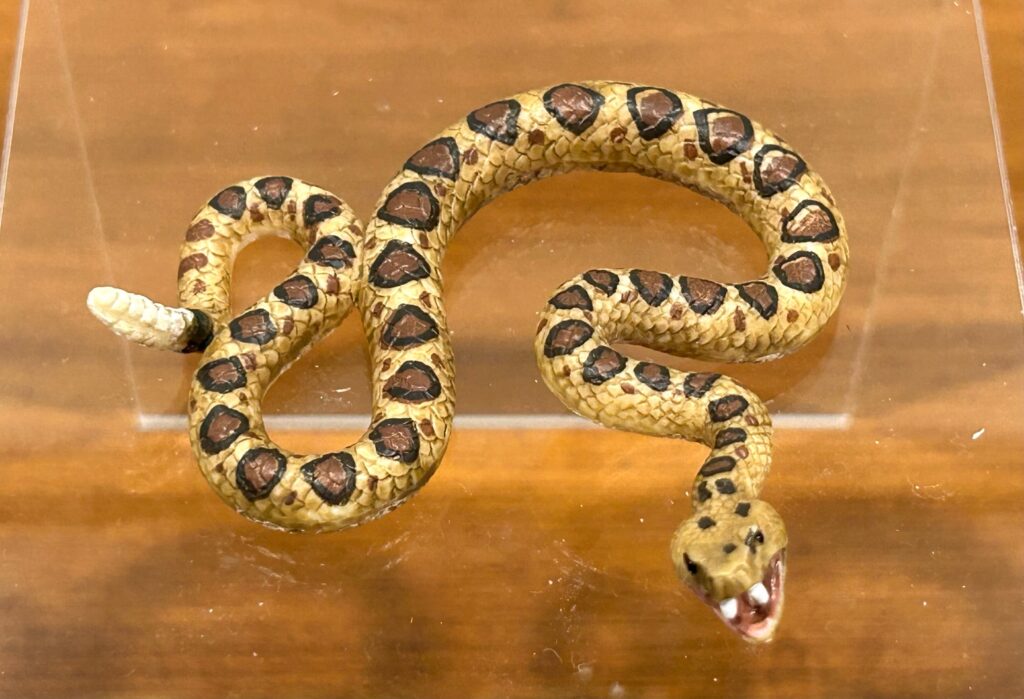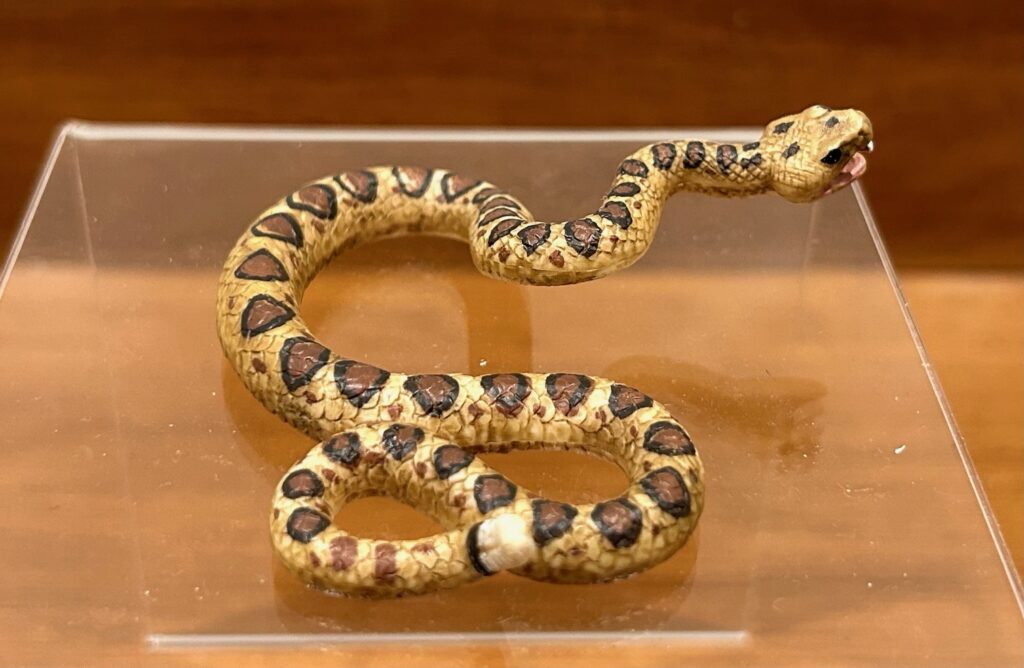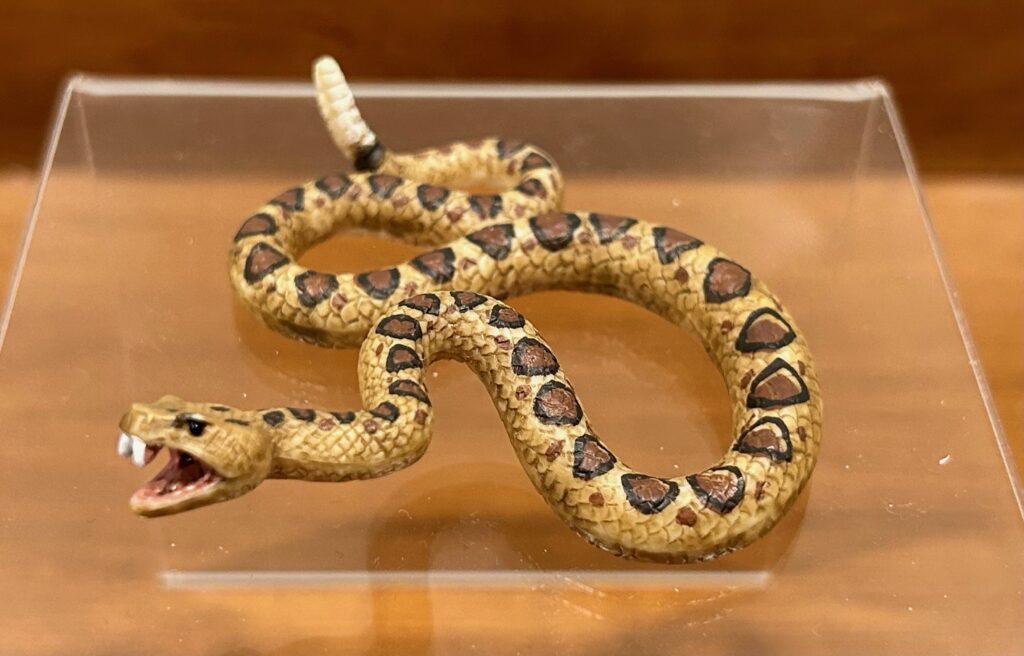Review and images by Suspsy; edited by bmathison1972
Ranging from southern Canada all the way down to Argentina, rattlesnakes are a large group of pit vipers famous and feared for their venom and their rattling tails. Despite their negative reputation, they are in truth important predators of rodents, helping to balance ecosystems and prevent crop damage. And while they are the leading cause of snakebite injuries in the Americas, fatalities are extremely rare nowadays thanks to antivenom.

Mojö Fun unfortunately does not specify which species their 2017 rattlesnake toy is meant to represent. Its main colour is light brown with a very light beige underbelly and medium brown wash to bring the scale pattern. Running down the length of the body are diamond-shaped markings painted medium brown and outlined with very dark brown. The rattle at the end of the tail is light beige with a dark brown ring at the base. Finally, the eyes are glossy black, the inside of the mouth is pink with black wash, and the fangs are white. I have thus decided that this is a Mohave or Mojave rattlesnake (Crotalus scutulatus), which is found in desert regions of the southwestern United States and Mexico and grows to an average length of around a metre.

This rattler is sculpted with its body coiled into a squiggly shape, giving it a length of 7 cm and a width of 7.5 cm. Both the rattle and the head are raised off the ground and the mouth open is as though preparing to strike. Rattlers are known for assuming this aggressive pose when being confronted by their predators, which include hawks, owls, bobcats, and coyotes. But when confronted by a kingsnake, which regularly consumes other snakes and is immune to venom, the rattler will do the opposite, keeping its head down and raising coils of its body in an attempt to protect its head from being seized in the kingsnake’s jaws.

Both the sculpting and accuracy are quite good for a relatively small toy. The head and most of the body is covered in a faint crisscrossing scale pattern with a heavy row of scales protecting the underbelly. The rattle, which serves as a warning to predators (which again doesn’t phase a kingsnake one bit), has the familiar grooved texture. You can almost hear the sound when you look at it.

The head has the correct profile for a pit viper. The fangs are far too big and thick to be called accurate, but it’s quite understandable given the toy’s size, and it certainly makes it look scarier and more recognizable as a venomous snake. Like most desert-dwelling rattlers, the Mojave feeds on rodents and lizards. Its venom has long been described as being some of the most lethal in the Americas, but recent studies have indicated that it may not be as deadly to humans as previously thought. Nevertheless, the Mojave, along with all other venomous snakes, should be treated with great caution.

Overall, the Mojö Fun rattlesnake has proved to be a pretty cool toy. It can be purchased online or at Toys “R” Us locations if you happen to reside in Canada.

With the CollectA green anaconda and CollectA king cobra:

Disclaimer: links to Ebay and Amazon on the AnimalToyBlog are affiliate links, so we make a small commission if you use them. Thanks for supporting us!




Not bad. An assessment of a Mojave rattler isn’t bad, given the overall generic appearance of the figure. With dark-bordered maculae and the brown maculae on the head, another potential ID is the prairie/western rattlesnake.
Growing up in Arizona, I saw tiger, twin-spot, and western diamondbacks in the wild.
Yeah, that would have worked as well. My kids just call it a rattlesnake.